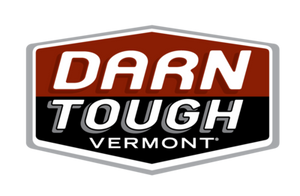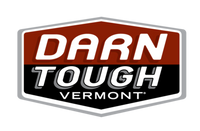Sock 201: How to Design and Develop Socks

To state the obvious: we knit a lot of socks here at Darn Tough. We believe that we have yet to product our best sock, and our mission to reach that goal keeps our Product Design and Development teams busy working on new sock ideas every day of the year.
If you’ve read our post on who makes Darn Tough socks, you already have an idea of how Darn Tough socks are manufactured, including but not limited to the actual knitting. In this post, we’ll take you on a closer look into how we design socks, from the research and development to knit-downs and fit testing. No worries, we’ll walk you those terms in a moment, but first let us show you.
Origins of a Sock
Wow, right? You just watched an overview (granted, much abbreviated) of the Design and Development process here at Darn Tough. What you saw is just the tip of the iceberg. Let us walk you through each piece of that video on how socks are made in a bit more depth.
Northfield, Vermont

We open with our Mill in Northfield, Vermont. Every single Darn Tough sock is made in the USA, using the highest quality yarns sourced from around the world. Our Product Development team has their own space in Northfield, so they’re working on our next sock right next to where it will be knit.
We love this photo of the team – you might recognize a few names and faces from other posts on our blog.

Ok, let’s see how this team gets into it…
Line Planning
The first part of the Product Development cycle is Line Planning, determining what direction each of our sock collections (e.g. hiking socks, running socks) needs to take. The video symbolized this with the removal of a sock in two colorways from our sock wall.
Line Planning includes everything from deciding what colors, or even entire socks will be discontinued, to updating existing socks, all the way to identifying opportunities for new socks.

A lot of research goes Into these decisions. Owen works closely with our Product Marketing Managers to gather resources and trends from the market, our own sales data and warranty feedback, discoveries from our Innovation team with Olivia and Clay, and feedback from customers like you. This research culminates in a Project Brief, which they present to our Design Team to kick off the season.
If you’re thinking that this sounds like the most interesting part of the Darn Tough product cycle, Owen, as the Product Line Manager, would like you to know he completely agrees.
Designing the Socks
With the line plan’s project scope and market research in hand, Jenny and Alex take another look at the market, researching everything from global insights and industry expertise to existing and upcoming color, pattern, and fashion trends. They gather their findings into trend boards, similar to a mood board, that helps guide the color palette and patterns of new socks.

From there, they translate the trends and research into design briefs. Each new style slot is rooted in an origin story, trend, or inspiration. Every color, every stripe, and every fun animal sock came from this process.
We don’t just make fox socks because they’re cute (though there’s also that), but because all that research says you’ll probably love them, too. Jenny, as Design Manager, briefs her team of designers so they can get to work drawing and designing CADs (Computer-Aided Designs).

Many designers means many diverse perspectives. The same design brief can mean endless possibilities, and often we can only choose one. We compile the array of CADs from our many designers and gather feedback to narrow them down. With the many gorgeous options we receive, this might be one of the hardest parts.
Sock Development
Once a design is chosen for knitting, the Development process begins. Kate heads up the team with Marcos. They’re a powerful duo charged with translating each design from a CAD into the individual components that will make it a sock. Each chassis – or combination of materials, height, weight, and cushioning – has specific requirements and templates.
Chassis: noun, the structure of a sock, the unique combination of Height, Weight, and Cushioning created by specific yarns and knitting techniques.

All this work results in a tech pack, which includes specific callouts for each color of Merino Wool, Nylon, and Spandex that will be used as well as the Bitmap and a flat layout of each design.
Bitmap: noun, the representation of a sock design, with each pixel, or bit, corresponding to one stitch within the sock.
One pixel equaling one stitch may sound simple enough, but there’s a ton to consider. The foot of a sock includes three different materials that all must be considered and placed correctly, as well as patterning and color changes, all of which have to be correctly marked for every individual stitch in the Bitmap, or the sock won’t come out correct.
Development therefore requires a lot of focus and time to push these pixels exactly where they need to be for the perfect balance of design and performance. Developing Darn Tough, USA made socks is that granular, at the stitch-by-stitch level.
Programming
Once complete, Kate and Marcos send the Tech Pack down the hall to Crystal and Clay, our Programming Team. With 37+ years of experience between the two of them, these industry experts convert the Tech Pack and Bitmap design into a knittable program, something our knitting machines can understand.
The programming they do tells each of the 168 needles on our knitting machines which materials to pick up or drop out for each individual stitch or pixel.

Depending on which combination of materials pick up or drop out, we can create different knit structures, such as jersey knits, ribbing, terry loops, mesh vents, drop needle patterning… the possibilities and combinations are endless.
The programming team breaks down new sock designs to work within the machine’s capabilities and get the optimum stretch, fit, and pattern execution. The program is then loaded onto a thumb drive and brought onto the floor to our sample machines.
Ready to Knit
Now it’s time to knit the sock for the first time, what we call a knit-down. This is where paper and pixels becomes Merino and stitches. The custom prototype program is loaded into the machine, and Pam and Amy’s work begins. As I’m sure you’ve guessed at this point, there’s a lot to it.

Samples of the new socks are knit, sized, and checked for defects, while the programs and machines are adjusted as needed throughout the whole process. It often takes 6-8 knit socks to fine tune the initial prototype. Precision is key. Pam and Amy are perfectionists, calling upon years of best practices, creative solutions, problem solving, and attention to detail every single day.
Finishing
Once the prototype is dialed, a small sample batch is passed to Raelene, our Samples Coordinator, for finishing – which includes washing, drying, and boarding. Raelene just hit her 25th anniversary working here at Darn Tough and is an integral part of our work.

The “Warm Cookies” bit in the video accurately portrays the excitement our Product Team feels when Raelene delivers fresh prototypes. Much like actual cookies, they come on a sheet pan and are hot off the boarding machine.
Fit Session
Fit sessions are next, where we test the fit of our new sock. Every new design and color is put on someone’s feet for our design and development teams to tweak. We’ve discussed a lot of components that can impact the overall design and fit of the prototype, and things can change even more once put on a foot.

As much we can predict how something will look, there’s nothing like putting it on a human body. Does the cushion sit where we expected it to? Does the design sit where we wanted it to on the leg? Do the yarn colors we selected combine to the desired effect? Sharpies come out to mark up the sock for subsequent rounds of sampling.
Honorary mention goes to Fig, our four-legged team member who has been known to sit in on many a fit session.
And Again
That’s only one round of sampling. If during the fit session we choose to continue with a design, it goes back to the development and sampling teams to implement any needed tweaks until we think it’s done.
As we get closer to the final prototype, we start to knit it in different colors as well. Choosing colors for a new design, or developing a new color for a carryover style, can take just as much effort as everything we’ve talked about. It’s a hard choice when you have so many great options to choose from.

Three rounds of prototyping per new design is standard, but more is not uncommon. We went through eight rounds for a new Animal House color, while an extreme example is the Light Hiker, which went through 27 or more prototypes, depending on who you ask.
Because We Are the Mill, we can tweak and test new prototypes quickly. Knitting happens next door to where we’re making tweaks and developing ideas.
Weighing & Waste
When we’re finally satisfied with both the design and color for a new sock style, we consider it locked, and we add it to our plan, along with the dozens of other new socks we’ve been working on. We then begin the meticulous task of sizing, spec sheets, and master data creation.

Every sock we offer comes in at least 3 sizes. Each of these sizes has its own spec sheet and data, as the same sock in size Small has fewer stitches overall than the same sock in size Large. The Development and Programming teams create additional Bitmaps and programs as needed and knit each size to dial in measurements and weights.

To calculate materials needed, Pam and Amy measure each yarn cone before and after knitting each size to determine how much wool, nylon, and spandex is used in each pair. The trimmings are captured as well to determine waste. We work with partners to give that waste a new life, so nothing’s truly wasted.
From there, all the documentation and materials that describe how to make the sock are created and proofread. These act as the instruction manual, a guide our knitters and technicians use to manufacture each sock style out on the Mill floor.
Done... For Now
So, there you have it – the knitty gritty of how we design and manufacture socks, from the first idea to earning its place on our sock wall. The story doesn’t stop there, though.
You wear our socks and let us know what you think, and that feedback leads to updates, tweaks, and improvements. Or we innovate a new technique, brainstorm another fun design…the possibilities are endless when you’ve still got your best sock ahead of you.








